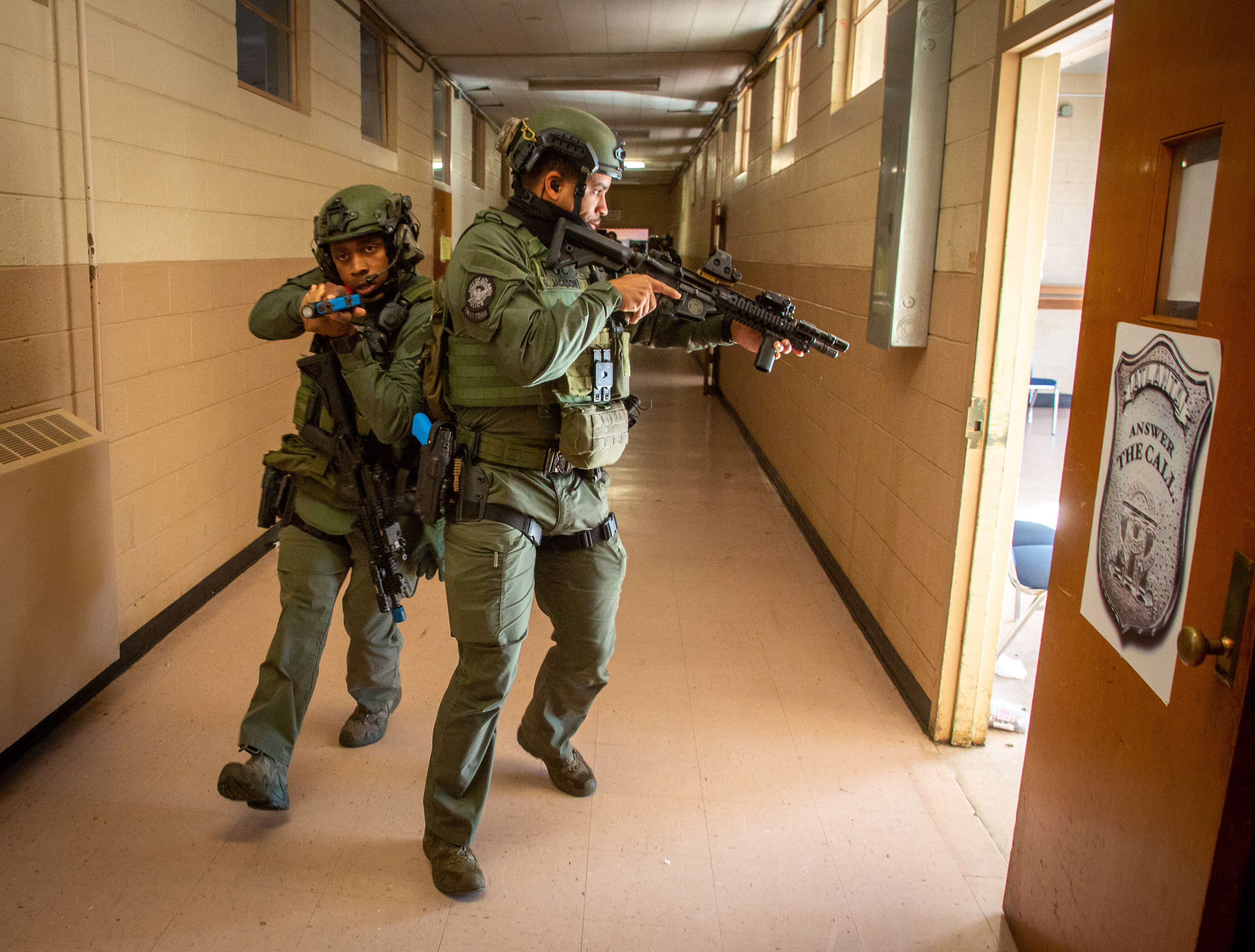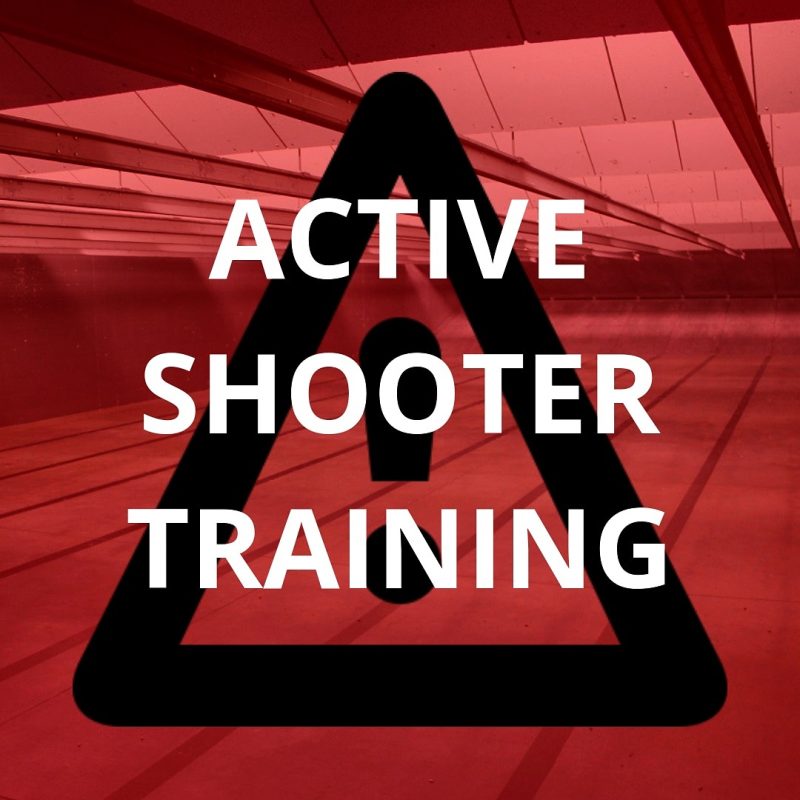How Active Shooter Training Can Save Lives in Crisis Situations
How Active Shooter Training Can Save Lives in Crisis Situations
Blog Article
Carrying Out Active Shooter Training: Ideal Practices for Developing a Safe and Prepared Neighborhood Atmosphere
As communities confront the distressing truth of active shooter events, the application of comprehensive training programs ends up being necessary. A successful method pivots on not just the development of tailored educational programs that attend to neighborhood risks but likewise the participation of varied stakeholders. By using a selection of training methods, areas can make sure that all members are equipped with important skills. The difficulty exists in keeping a flexible structure that progresses with emerging dangers. What are the essential components that can change a standard training program right into a robust design for community resilience?

Recognizing the Requirement for Training
In an era marked by increasing occurrences of violence in public rooms, recognizing the demand for active shooter training has never been extra crucial. Extensive training efforts can furnish individuals with the understanding and skills to react decisively.
Additionally, the psychological impact of violence on people and areas can not be overstated. Training promotes a sense of empowerment and readiness, enabling people to feel even more secure in their surroundings. It also promotes a culture of safety, where awareness and watchfulness end up being essential elements of day-to-day live. The benefits of active shooter training extend past instant action; they consist of enhancing interaction methods and enhancing overall safety procedures within organizations.
Secret Elements of Effective Programs
Reliable energetic shooter training programs include numerous essential elements that boost preparedness and response capacities. Extensive curriculum growth is crucial, guaranteeing that training web content is relevant, evidence-based, and tailored to the details requirements of the company or area. This consists of comprehending the dynamics of energetic shooter occurrences and the psychological effect on people included.
2nd, realistic training situations must be employed to imitate possible situations, enabling individuals to exercise decision-making and action strategies in a controlled atmosphere. These drills facilitate muscle memory and build self-confidence amongst participants.
Third, a concentrate on communication procedures is important. Developing clear lines of communication amongst police, emergency situation -responders, and participants makes certain worked with feedbacks throughout an event. Regular updates and refresher course programs help maintain interaction paths clear and reliable.
4th, continuous evaluation and comments devices must be integrated right into the training program - active shooter training. Examining the performance of training with individual comments and efficiency metrics enables for continuous improvement
Finally, fostering a culture of safety and preparedness within the neighborhood motivates caution and aggressive actions, ensuring that individuals are not only trained but also engaged in maintaining a safe atmosphere.
Engaging Neighborhood Stakeholders

To properly involve these stakeholders, it is necessary to communicate the purposes and benefits of the training. Holding informative sessions can aid clarify the training's function, address concerns, and detail the roles each stakeholder may play. Creating a stakeholder consultatory board can my latest blog post help with recurring discussion, allowing for varied perspectives and insights to be incorporated right into the training program.
Structure partnerships with community leaders and companies is also essential. Their assistance can boost outreach efforts, boost participation, and guarantee that training is customized to the distinct requirements of the neighborhood. Furthermore, stakeholders can aid in disseminating information and resources, strengthening the message of safety and security and preparedness.
Eventually, involving neighborhood stakeholders not just reinforces the training initiative but likewise grows a feeling of possession amongst homeowners, leading to a more resistant and enlightened area with the ability of reacting properly to potential risks.
Training Delivery Methods
Making use of a selection of training distribution techniques is necessary to fit the diverse learning styles and demands of individuals in energetic shooter training programs (active shooter training). Reliable training can take a number of kinds, consisting of lectures, hands-on simulations, online components, and interactive workshops. Each technique serves a special objective and can improve the overall understanding experience

On the internet modules offer versatility and accessibility, allowing individuals to find out at their very own pace. These can include video clips, tests, and discussions to assess understanding. Interactive workshops urge group discussions and analytical, advertising synergy and communication skills.
Including a combined approach that integrates these techniques not just improves the training experience but likewise makes certain that individuals are much better prepared to respond efficiently in case of an energetic shooter scenario (active shooter training). By dealing with different discovering choices, companies can produce an extra enlightened and receptive area
Continual Assessment and Renovation
Routine analysis and improvement of active shooter training programs are vital to preserving their significance and effectiveness. As hazards develop, so should the strategies and techniques employed in training. Continual evaluation makes sure that training content shows the most recent knowledge on active shooter cases, including lessons found out from recent events and changing for arising patterns.
To facilitate this process, companies ought to develop feedback devices that consist of participant assessments, expert reviews, and event debriefs. Collecting here are the findings information on individual performance during drills and workouts is vital, as it highlights locations requiring enhancement and notifies future training sessions. Additionally, involving with police and emergency responders can supply useful insights right into the functionality and applicability of training procedures.
On a regular basis arranged testimonials of training products and techniques must be mandated, fostering a setting of advancement and adaptability. Organizations has to likewise urge a culture of recurring understanding, where personnel feel encouraged to suggest adjustments based upon their experiences. By committing to constant evaluation and enhancement, companies not only enhance the effectiveness of their active shooter training programs but also strengthen their total commitment to safety and security and preparedness within the area.
Conclusion
To conclude, effective implementation of energetic shooter training demands a detailed approach that prioritizes neighborhood involvement and reasonable simulations. By creating customized curricula, integrating varied training approaches, and fostering collaboration amongst stakeholders, areas can enhance preparedness. Constant analysis and comments mechanisms are important for adapting programs to arising dangers, thereby enhancing total safety and security. Ultimately, a commitment to continuous training and enhancement cultivates a society of alertness and preparedness, ensuring a safer atmosphere for all neighborhood participants.
Report this page